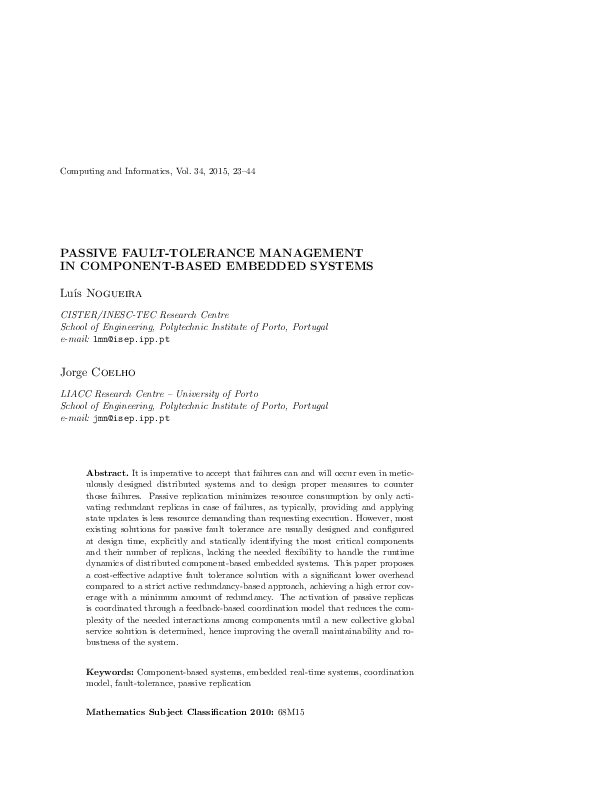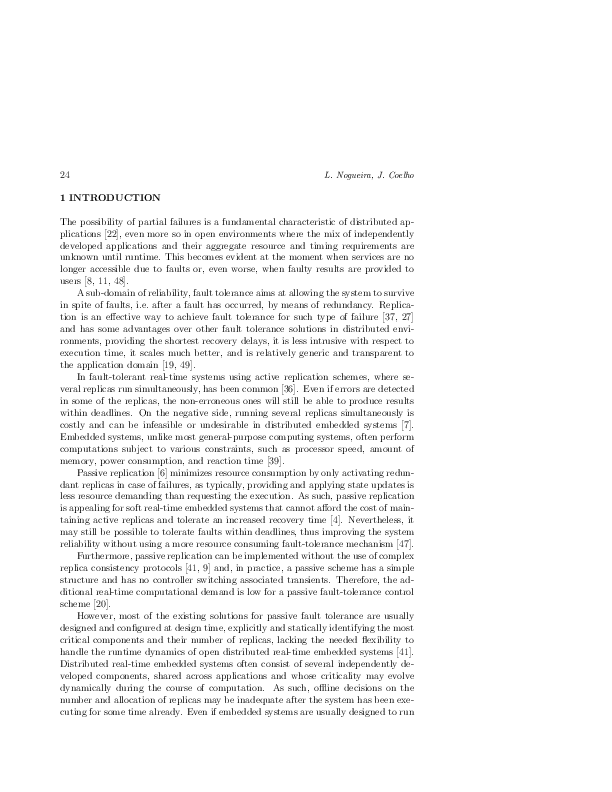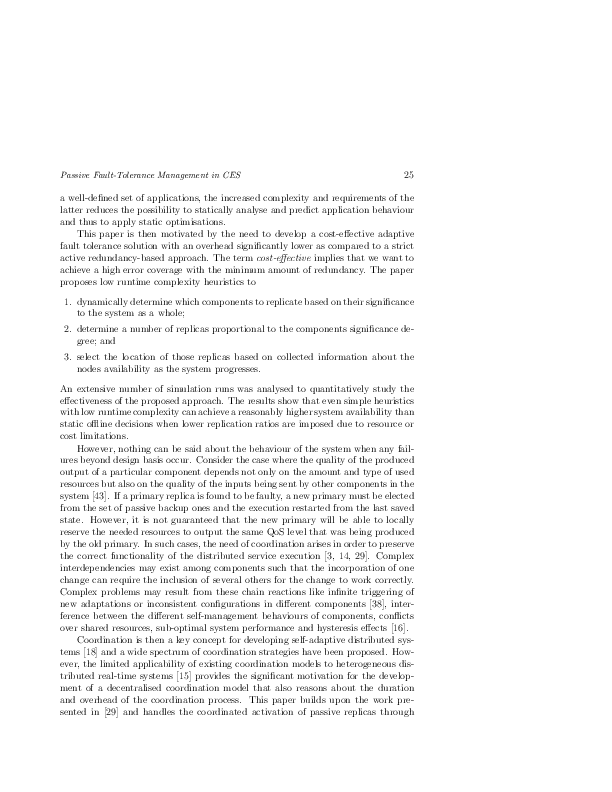Passive Fault-Tolerance Management in Component-Based Embedded Systems
keywords: Component-based systems, embedded real-time systems, coordination model, fault-tolerance, passive replication
It is imperative to accept that failures can and will occur even in meticulously designed distributed systems and to design proper measures to counter those failures. Passive replication minimizes resource consumption by only activating redundant replicas in case of failures, as typically, providing and applying state updates is less resource demanding than requesting execution. However, most existing solutions for passive fault tolerance are usually designed and configured at design time, explicitly and statically identifying the most critical components and their number of replicas, lacking the needed flexibility to handle the runtime dynamics of distributed component-based embedded systems. This paper proposes a cost-effective adaptive fault tolerance solution with a significant lower overhead compared to a strict active redundancy-based approach, achieving a high error coverage with a minimum amount of redundancy. The activation of passive replicas is coordinated through a feedback-based coordination model that reduces the complexity of the needed interactions among components until a new collective global service solution is determined, hence improving the overall maintainability and robustness of the system.
mathematics subject classification 2000: 68M15
reference: Vol. 34, 2015, No. 1, pp. 23–44


